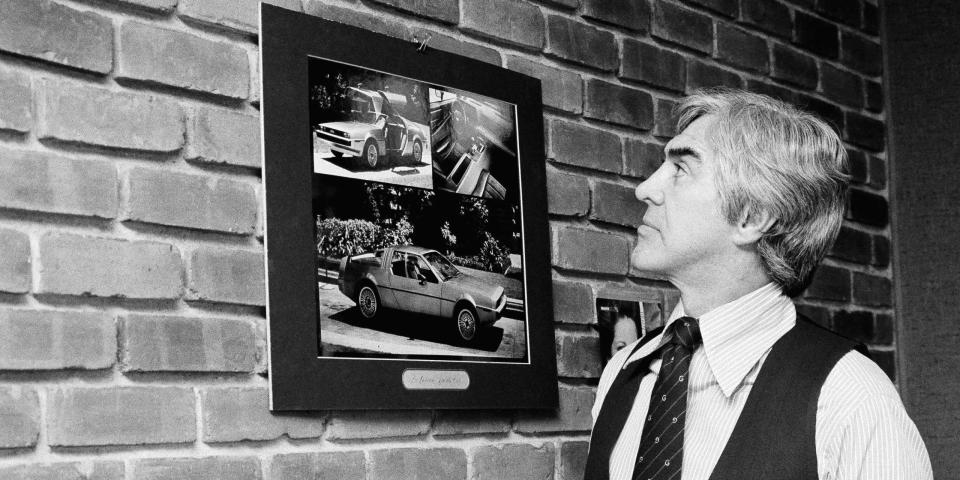The DeLorean Story Like You've Never Heard It Before

John DeLorean started his time in the auto industry at Packard, but his time there was short lived as the company entered its downward spiral. So, he moved on to Pontiac, where he soon turned Chrysler's muscle car idea into a very loud reality with the advent of the GTO. That was one of the achievements that helped him move over to Chevrolet. The way was clear all the way to the top of GM, but instead of marching there, he decided to go even bigger by building his own vision, the car of the future.
Getting £80 million from the Labour government and convincing Colin Chapman that the car his team would develop won't compete with the Lotus Esprit was quite an achievement on its own. But being the down-to-earth nutter that he was, DeLorean continued by setting up a car factory in Northern Ireland, a part of the world where many never had any sort of job to start with, let alone one in the car business. No wonder the piece of land he secured was a swamp. No matter! After removing a few feet of mud and making a mountain smaller by filling up the place with rocks, the wheels for DeLorean's car of the future were set in motion.
DeLorean wanted an ethical sports car, one that would last forever and look like nothing else. Since the DMC-12 was the Tesla of its day, the best engineers in the world got involved, and although none of them recommended using a stainless steel body, gullwing doors and a gutless Peugeot/Renault/Volvo V6 mounted at the back that wasn't even certified for the US market, DeLorean insisted on the first two and had already signed a deal on the third.

The timeframe was impossibly tight. Officially, they had 18 months to complete the car, unofficially, it took 24 months, and the DMC-12 got certified in 28, a record that could stand forever. 375 employees worked 24/7 to achieve that, putting aside politics, religion and personal problems to create something truly outstanding. It wasn't simultaneous engineering, but simultaneous everything. After driving what wasn't even a prototype but rather Lotus's almost empty show car, the engineering team recommended major changes. Then came the riots and the fire bombs, since Northern Ireland was at war. While the factory was turned into barracks by the army, precious records were lost forever in the fires. And nobody knew what was supposed to keep those heavy gullwing doors open. Nobody thought of that before.
Once the first car got off the line, they made 3000 changes to the product. Build quality was improving at a promising pace, but since the demand was so high in the US that the $25,000 car was selling well above its sticker, DeLorean introduced another shift, raising production output from 50 to 80 cars a day. That turned out to be a terrible mistake.

Then, the economy took a downturn with high inflation and an awful dollar/pound ratio, while DeLoren also wanted to go public with his company, hoping to cash in on the adventure. But while facing a major cash flow problem, a change in the British goverment meant DeLorean had to look elsewhere for money. The next thing you know, the boss was taken by the police not long after DeLorean was outselling Porsche and Mercedes in the US, its sole market.
DeLorean was cleared two years later, and while he was full of great ideas, nobody listened to him anymore. Part of his legacy, an inventory of millions of unused parts was saved in 1997. Today, you can still buy a brand new DeLorean DMC-12.

 Yahoo Autos
Yahoo Autos 